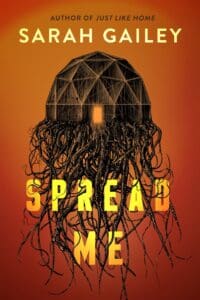
Synopsis:
You move to a new area, hoping for a fresh start.You bury yourself in a new career, hoping for an identity.But the new area has roads no one travels down if they can help it, and the people stare at you with secrets behind their eyes that were old before you were born. But the new career has responsibilities that no one warned you about, and the duties weigh on your soul.Charlie Brooks, a man with a painful past, is about to learn that not even a symbol of law and order can maintain control when forces beyond comprehension want to break through. In a time before instant digital connection and distrust in the world around us, Charlie Brooks will learn how escape is impossible.(Originally published as I Can Give You Life)
Review:
The title story/central novella in Paul Michael Anderson’s newest, The Only Way Out is Through, does so many things right that I wanted to love it. A story grounded in place? Check. Seemingly effortless period setting? Check. A focus on the protagonist’s work life? Check. Haunted highways and a folk horror setup that subverts expectations? Double check.
And yet…
Charlie Brooks is a young man running from his traumatic past, and he’s run right into the arms of the Virginia State Troopers, where he is the new man on the job. Almost immediately, he witnesses strange and violent doings on highway 526, followed by all types of whispering furtiveness from his coworkers and the townspeople. And it doesn’t take long to find out that there’s something rotten in this little community, and Charlie might be the only one who doesn’t know about it.
That “doesn’t take long” is one of the troubles with this novella, a story that could have stood to let itself steep in some creepy atmosphere and build a real sense of dread. The setup is there, and so is the characterization. But The Only Way Out is Through rides the plot almost from the get go, and there’s little time to even consider events, as Charlie is thrown into the Sgt. Howie role, him against the town.
In the end, the story blasts forward and the plot itself offers little surprise for the reader. What is said will happen is roughly what happens, and there doesn’t seem to be a great deal at stake for Charlie. Rarely do I say it, but the story could have benefitted from more room to stretch and grow, to build suspense, and to give Charlie something more to motivate him beyond a troubled past.
I felt similarly about the other three stories included in the volume: interesting settings, cool concepts, and a lack of payoff. “And, In the End, A Reckoning of What I Have Become” was the strongest of these, with a hard boiled narrator negotiating a world of Lovecraftian horrors. But once again, it felt more like a sketch than a rounded narrative.
“Two Views of the Breaking World” contains some fascinating language and what I believe might be an intriguing device, but it was finally so elliptical and dense that I wasn’t entirely sure what the hell was going on.
In the end, The Only Way Out is Through feels more like a collection of sketches and setups for stories that haven’t yet found their final direction, despite the wide range of elements that are otherwise all working remarkably well. Accordingly, my experience as a reader was frustrating and frustrated, feeling sure that there was something great very close by, but it just hadn’t quite been realized.







Leave a Reply